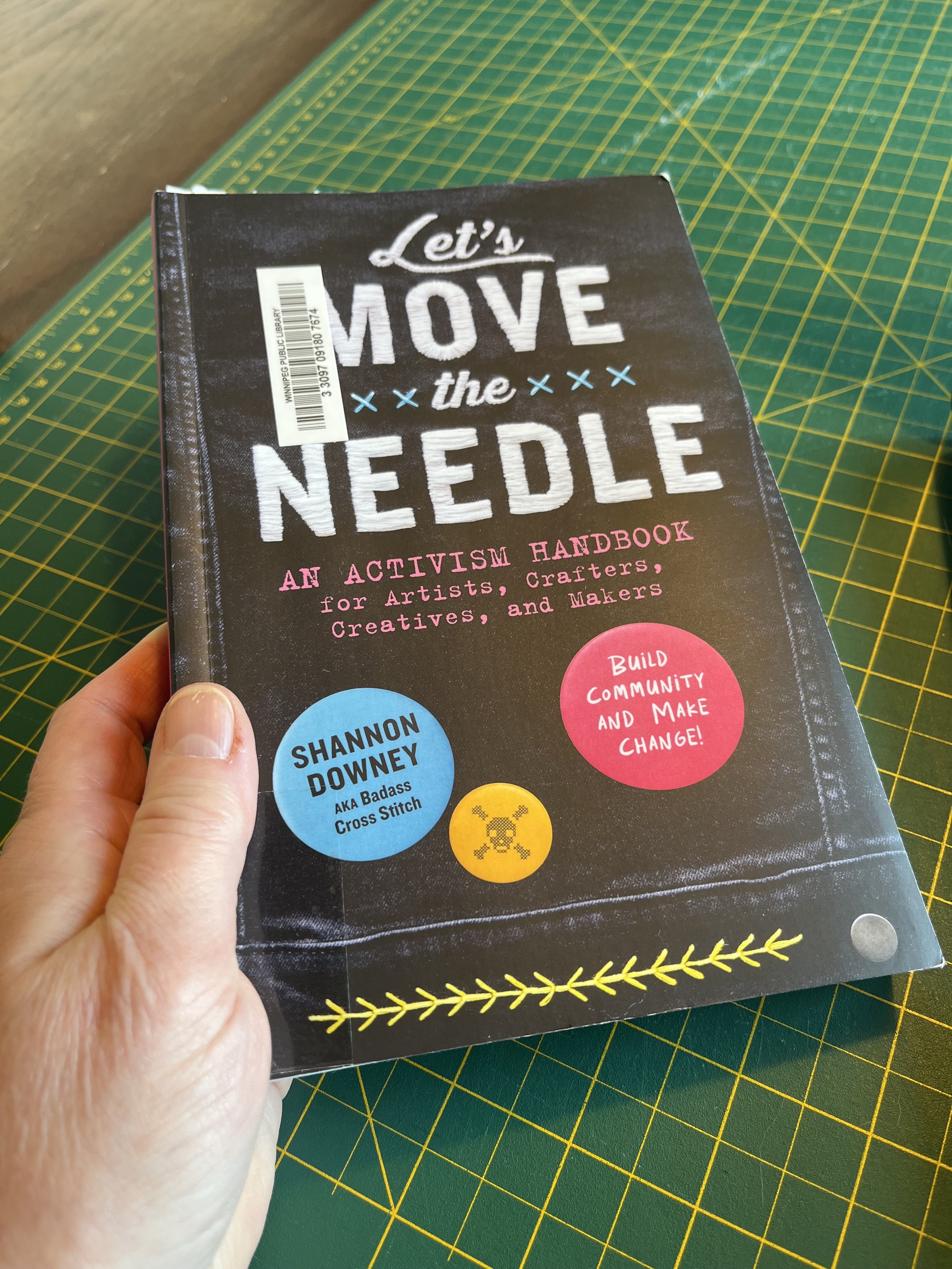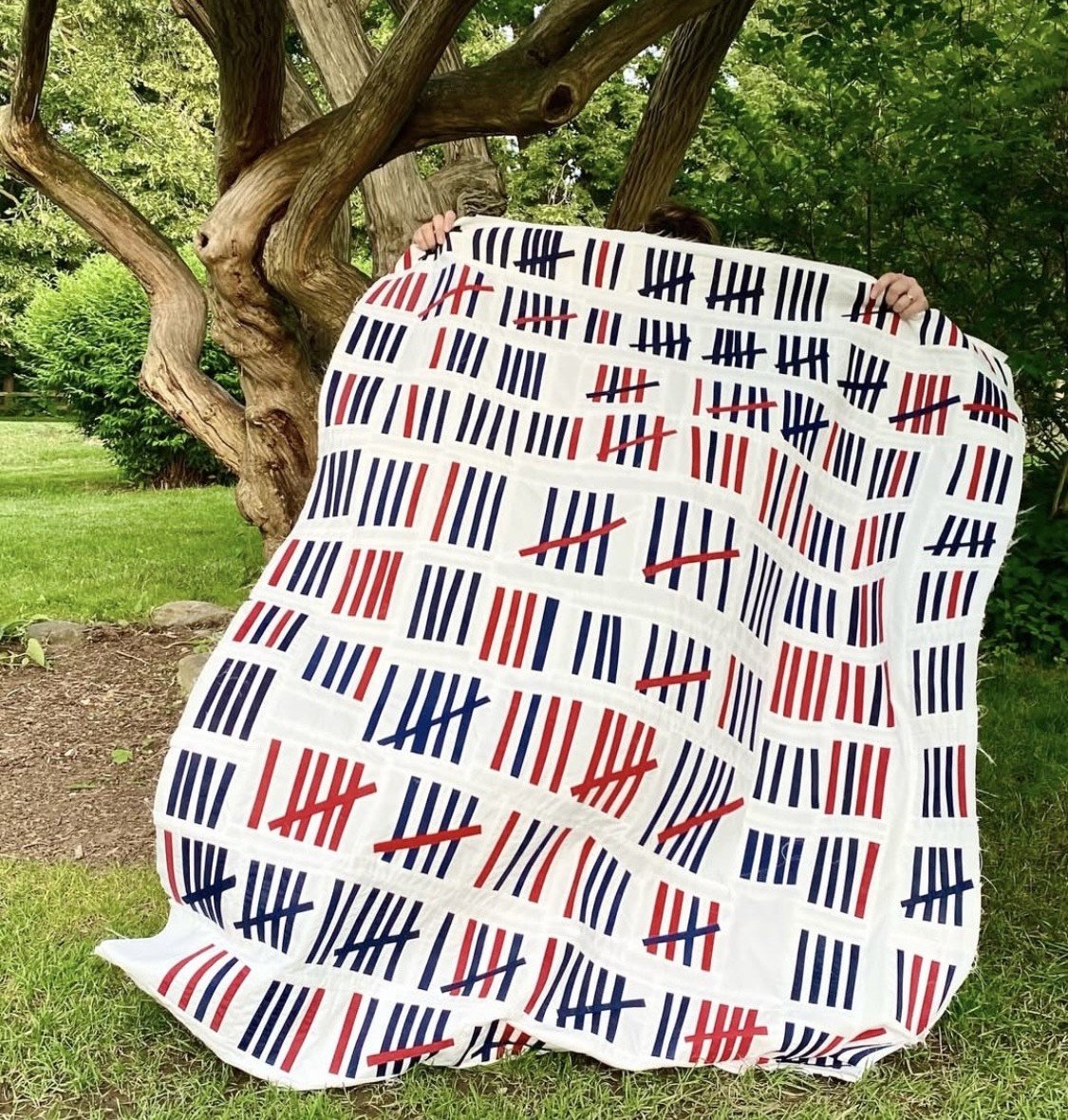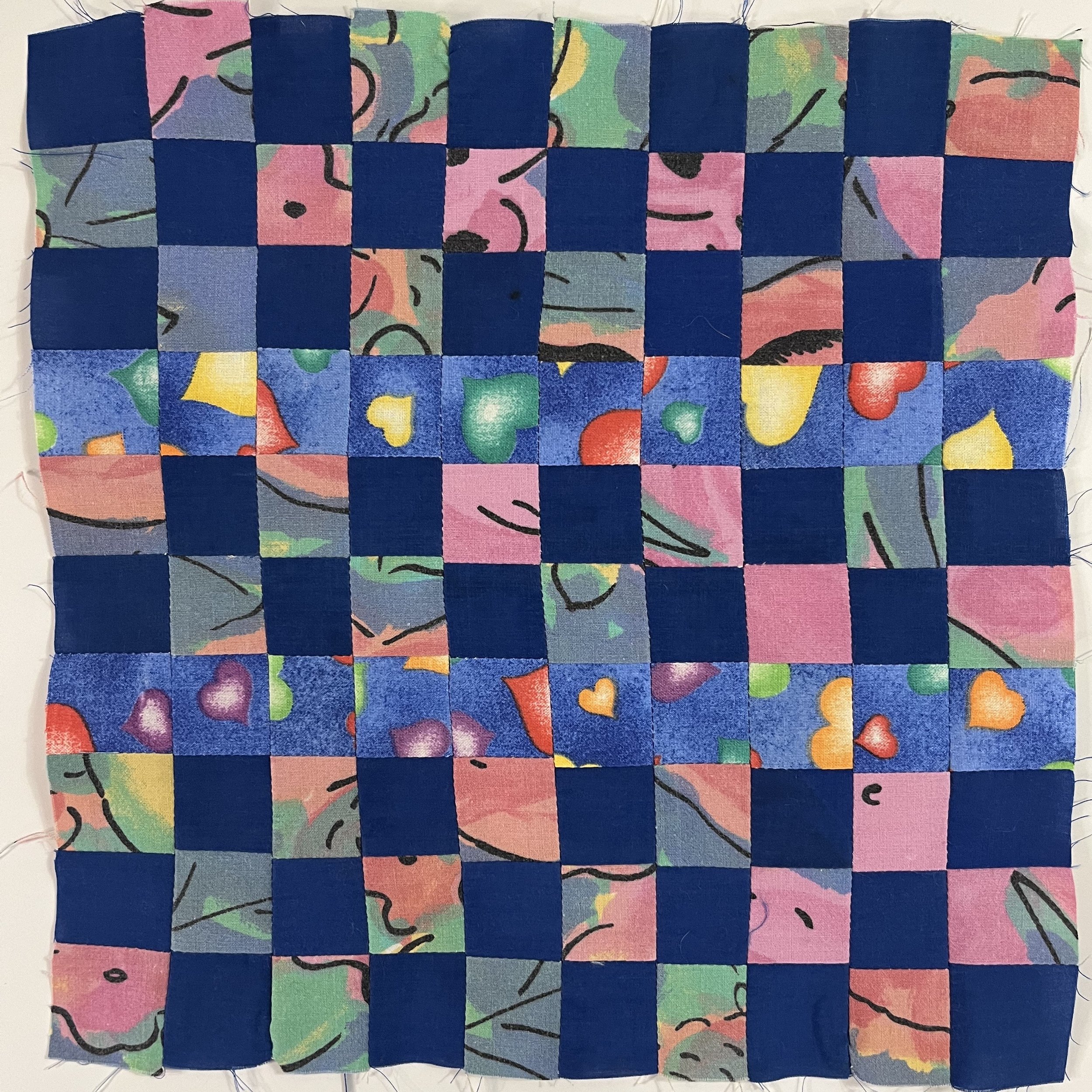Book feature: Let’s Move the Needle
If you came here via my Instagram stories, you know I have opinions. I express these in the stories I share that highlight such topics as LGBTQ rights, climate justice, food and housing security. Increasingly I am interested in bringing these and other activist themes into my quilting.
“Craftivism” is a new name for something that has likely existed as long as humans have crafted. Artists are moved to create because they have things to express, and often the things they need and want to express are political in nature. Let’s Move the Needle: An Activism Handbook for Artists, Crafters, Creatives and Makers by Shannon Downey is an accessible resource for any creator who wants to be more intentional about using their creativity to build community and drive change. Shannon (aka Badass Cross Stitch) covers everything from a brief history of craftivism though how to focus about your own message to the practicalities of making a concrete action plan (there’s even a section on spreadsheets and budgets!) The book is colourfully illustrated with pictures of her own craftivist stitching.
A significant portion of the book is devoted to exercises that are designed to help the reader think through their own “activist identity.” While I read this book on my own, I think there would be even greater value in working through some of these exercises and reflections with a partner or group – because sometimes getting comfortable with the uncomfortable is more effective when someone else is holding you accountable!
One of the hardest lessons, and biggest “aha” moments, for me was her insistence that an activist pick one core issue to focus on. At a time when there are SO MANY ISSUES in desperate need of attention, this may seem counterintuitive. But there is wisdom in her assertion that, “Committing your energy, attention, and focus to the issue that is most meaningful to you will allow you to really dive deep, which is vital to achieving and maintaining material change.” She does also acknowledge that, “While staying focused on a core issue is important, sometimes we need to redirect our efforts to support other activists during times of crisis.” The main point is that you can’t do it all, which is where her other key emphasis on community comes into play.
Activism is a team sport. I’ve observed the importance of this in the work of craftivists whose efforts I have followed over the past year. In January of 2024, Erin Bauchan-Caprara (seamrippersociety) embarked on a project to document through quilt blocks every mass shooting in the USA. Shown here is a quilt top pieced from the blocks that represent only the first three months of 2024. At time of writing, she is working her way through the June 2024 blocks. It’s a powerful story she is telling and it’s getting attention (not all of it positive, as one would expect!) But it’s a story that needs to be told, and so for 2025 she has enlisted a team of 52 volunteer quilters to share the work.
Another quilter, Sydney Shadeck-Triola (sydney.makes) knew from the start that it would take a village to achieve her vision. She launched a project she called An Inch for Each of the Dead to create a collaborative quilted memorial banner representing every Gazan life lost since October 7, 2023. Over 250 contributors from around the world have sent in patchwork blocks each comprised of 100 one-inch squares. Sydney is assembling these into a massive banner that currently wraps around the walls of the gallery where it is on display in Glasgow. I contributed this block made from scraps of the quilts my kids slept under when they were small.
There are many ways to make the personal political. The advice in Shannon Downey’s book is a great starting place for doing just that.
Get the book:
Let’s Move the Needle: an Activism Handbook for Artists, Crafters, Creatives, and Makers
By Shannon Downey
2024, Story Publishing
ISBNs: 978-1-63586-890-6 (paperback); 978-1-63586-891-3 (ebook)
Some frank activist talk about where we buy our books:
I was boycotting Amazon long before it was the thing to do. In its early days I watched it wreak carnage on independent booksellers. People close to me lost jobs and businesses as a direct result of long-standing industry pricing practices being undercut. Today it’s almost impossible to provide a link to a book that doesn’t take you directly or indirectly to Amazon.
But there are still local book shops. There are other online purchasing options for new and secondhand books that don’t line the overstuffed pockets of billionaires. And there are libraries. It might take a few more minutes to source the book. It might cost a couple more dollars. It might take a little longer for the book to arrive. But it will make a difference. I will always provide you with the information that would enable almost any book store to source it for you from the publisher, even if it’s not something they normally carry. One bonus to special ordering a book in this way is that it might expose your local bookseller to a book that wasn’t on their radar, and that might be of interest to their other clients.
That said, if the convenience and economy of an Amazon purchase is the best option for you, I absolutely do not judge you. What matters to any author is that you read their book!


